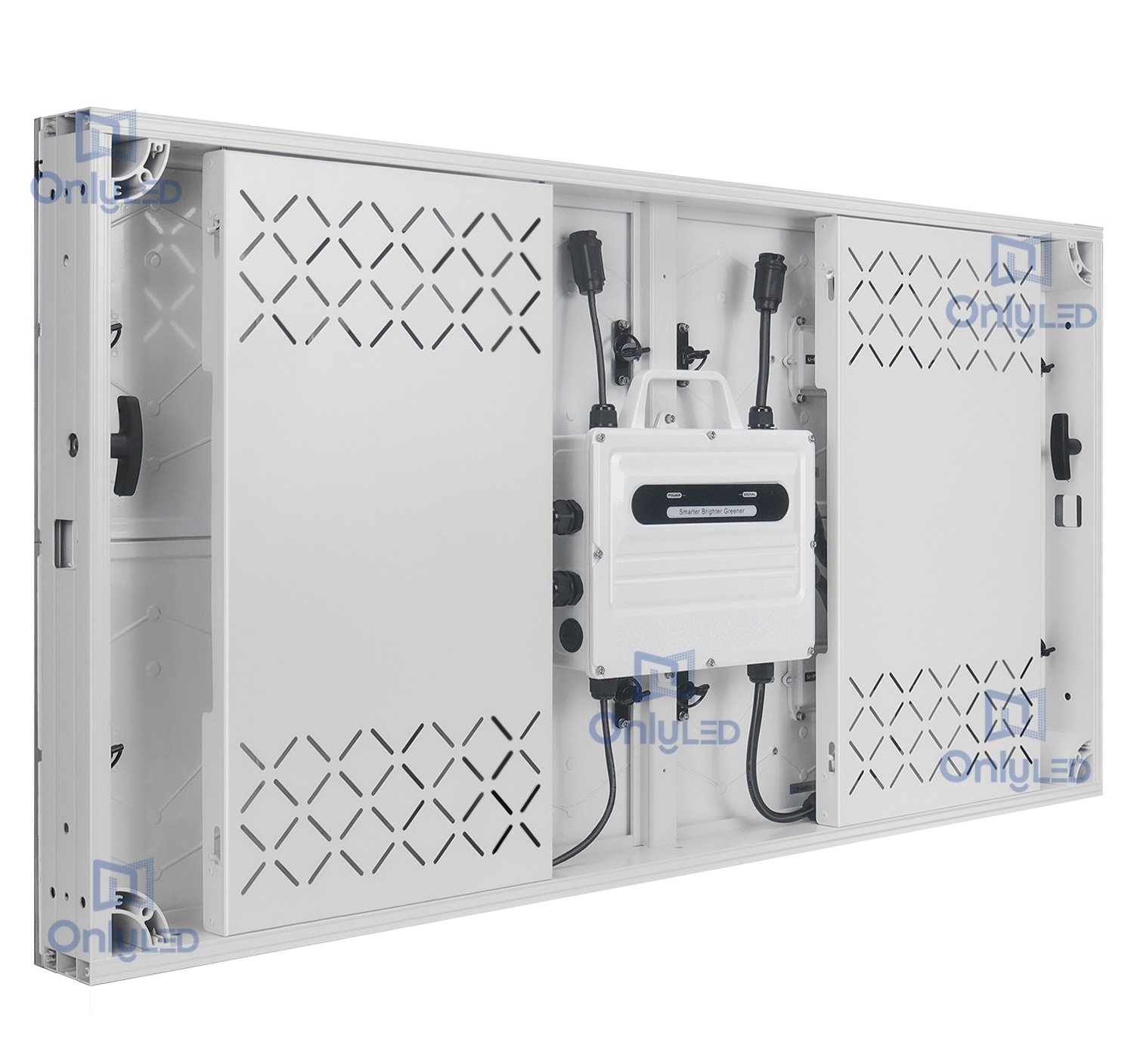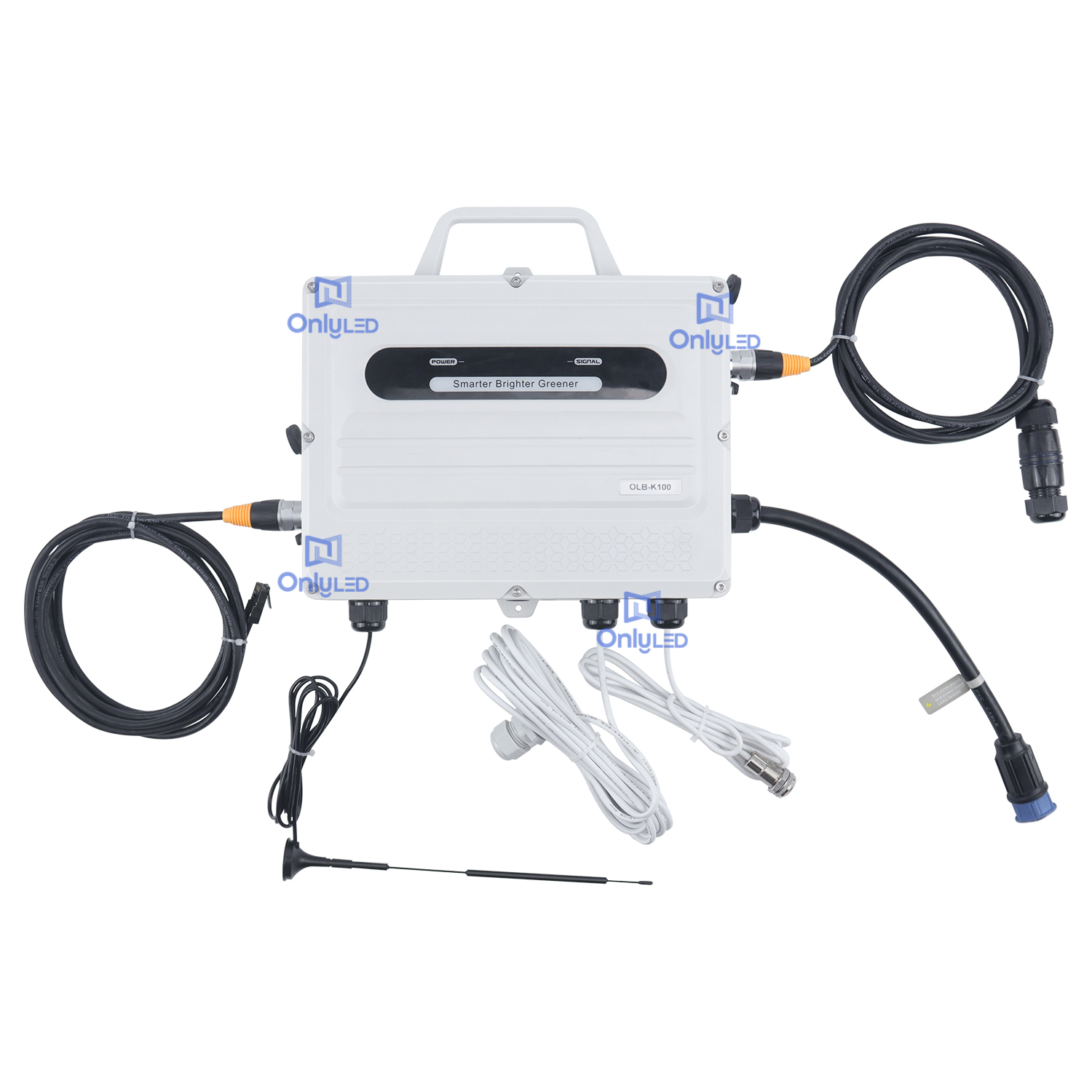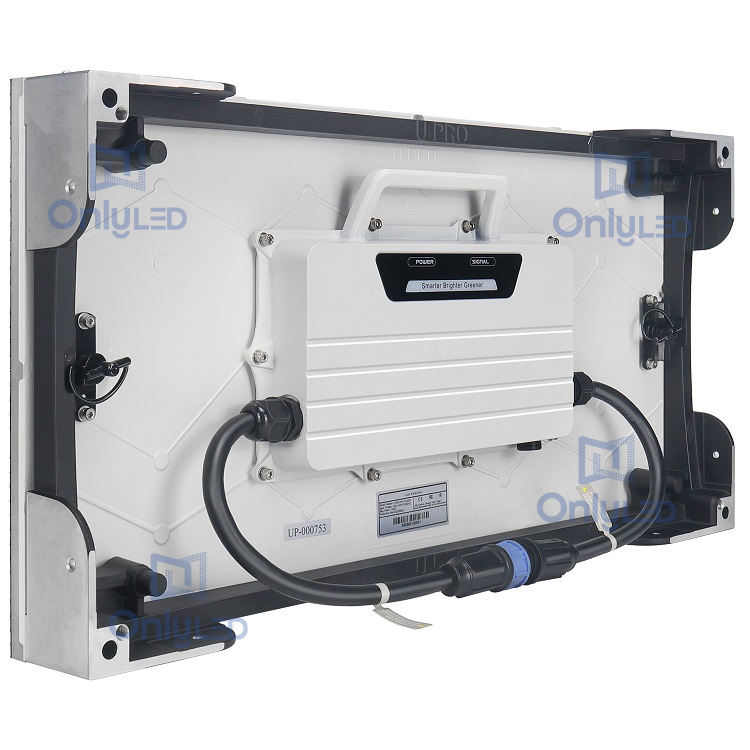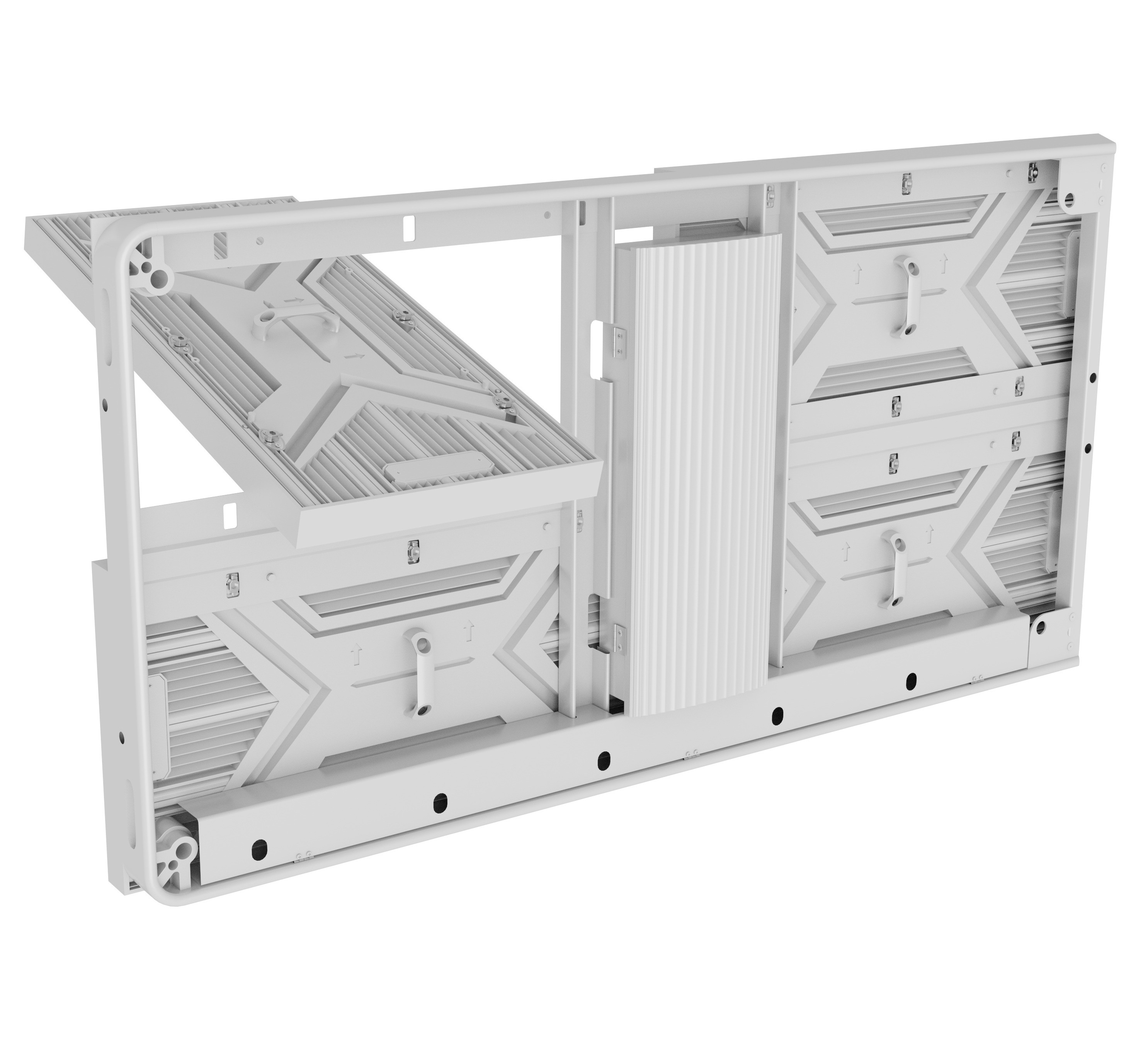Industry News
ALL IN ONE LED Leads Display Industry Transformation: 2025 Tech Breakthroughs, Scenario Boom & 2026 Cost Inflection Preview
Reporter | Doubao October 2025
Amid the wave of display technology iteration, ALL IN ONE LED is accelerating its penetration from the high-end market and has become a core driver of global display industry growth. According to the latest 2025 Global LED Display Market Report released by Sigmaintell, the global market size of ALL IN ONE LED reached 8.96 billion yuan in the first half of 2025, with a year-on-year increase of 42.3%—far exceeding the 11.7% growth rate of traditional LCD display panels. From the outdoor giant screens in Tokyo’s Ginza to Shenzhen’s smart exhibition centers, from monitoring screens in corporate command centers to transparent windows in retail stores, ALL IN ONE LED is reshaping the boundaries of display applications with three core advantages: "seamless splicing, ultra-high image quality, and wide-temperature stability."
About ONLYLED: Your Trusted Hub for LED Display Insights
As a leading global platform dedicated to the LED display industry, ONLYLED focuses on providing comprehensive resources for ALL IN ONE LED technology, product solutions, and market trends. Catering to LED industry practitioners, investors, and end-user buyers, ONLYLED offers real-time updates on cutting-edge technologies (such as Mini LED and Micro LED), case studies of successful deployments, and in-depth market analyses. Whether you are seeking cost-effective ALL IN ONE LED display solutions for retail stores, enterprise meeting rooms, or outdoor advertising, ONLYLED connects you with industry experts and reliable suppliers to support your business growth in the fast-evolving LED market.
I. Tech Breakthroughs: From "Image Quality Upgrade" to "Experience Innovation," ALL IN ONE LED Breaks Multiple Limits
(1) Mini LED Backlight Empowers, Contrast Gap Narrows Further
Since 2025, breakthroughs in core parameters of ALL IN ONE LED have continuously refreshed industry perceptions. In September, TCL CSOT launched its new-generation ALL IN ONE LED product, which adopts Mini LED backlight technology and glass-based packaging process. This product boosts the contrast ratio to 120,000:1—20% higher than mainstream products in 2024—while reducing power consumption by 15%. "Even with quantum dot technology, traditional LCD screens can hardly exceed a contrast ratio of 3,000:1. Our new solution enables black images to present a ‘deep ink-like’ effect, which is crucial for professional fields such as design and film post-production," said Li Zhen, General Manager of TCL CSOT’s Display Business Group.
Furthermore, BOE launched a 55-inch ALL IN ONE LED splicing screen in August, with a bezel width controlled within 0.8mm—making it the industry’s smallest bezel product to date. "In a provincial emergency command center project, 24 55-inch screens were spliced into a 12-meter-wide monitoring wall. Due to the ultra-narrow bezel, staff feel no image fragmentation when viewing the global map—a feat impossible for traditional LCD splicing screens," introduced Wang Lei, Head of BOE’s LED Products Division. This project has become a benchmark case in China’s emergency command field, driving a 60% growth in similar orders in East China.
(2) Transparent Display Tech Lands, Retail Scenarios Witness "Visual Revolution"
The commercial application of transparent ALL IN ONE LED is emerging as a new growth driver in the retail industry. In the third quarter of 2025, Samsung Display collaborated with Sephora, a domestic chain beauty brand, to deploy transparent LED window screens in 50 stores nationwide. With a light transmittance of 85%, consumers outside the store can view both the skincare product displays inside the window and dynamic content such as product ingredient analyses and usage tutorials. "Data from pilot stores shows that transparent LED windows have increased store entry rates by 32% and product trial bookings by 27%. This ‘visualization + interaction’ display method is redefining retail visual marketing," revealed Zhang Min, Sales Director of Samsung Display China. Samsung plans to expand the number of cooperative stores with transparent LED windows to 300 in 2026.
Similarly, Leyard, a domestic LED enterprise, launched a "transparent LED showcase" in September, mainly for jewelry and luxury retail. Adopting Micro LED chips, the showcase is only 1.5cm thick and can be embedded in the glass layer of traditional showcases, displaying jewelry while playing product design stories. "After a high-end jewelry brand’s Beijing SKP store adopted this showcase, the average customer spending increased by 18% and consumer stay time doubled. Transparent LED is shifting from ‘attracting attention’ to ‘enhancing consumer experience,’" said Chen Xi, Director of Leyard’s Retail Business Division.
II. Market Expansion: From "Outdoor Dominance" to "Full-Scenario Penetration," Demand Surges in Segmented Sectors
(1) Outdoor Advertising: LED Penetration Exceeds 80%, High Brightness Becomes "Must-Have"
In the outdoor display sector, ALL IN ONE LED has formed an "overwhelming" advantage over LCD. According to Omdia data, the penetration rate of LED products in the global outdoor advertising screen market reached 82.3% in the first half of 2025, an increase of 9.5 percentage points compared to 2024. "Under direct noon sunlight, traditional LCD screens have a brightness of less than 300 cd/㎡, resulting in blurry images. However, ALL IN ONE LED screens can easily reach a brightness of 5,000 cd/㎡, presenting clear images even in the strong light of the Sahara Desert," said Zhao Gang, Technical Director of Focus Media, an outdoor advertising operator. In 2025, 100% of the 1,200 new outdoor large screens added by Focus Media adopted ALL IN ONE LED technology. "Although the purchase cost is about 1.8 times higher than that of LCD, the service life is 100,000 hours—twice that of LCD—making it more cost-effective in the long run."
From a regional market perspective, the penetration rate of outdoor LED in East China and South China has exceeded 90%. Take Shanghai as an example: in 2025, all outdoor large screens in core business districts such as the Bund and Lujiazui completed the "LCD-to-LED" transformation. Among them, a 300㎡ curved LED screen in Lujiazui has become a new "Internet-famous check-in spot" due to its ability to play 8K ultra-high-definition videos, increasing the average daily foot traffic by 45%. In third- and fourth-tier cities, the penetration speed of outdoor LED is also accelerating: in the first half of 2025, the number of outdoor LED orders in these cities increased by 73% year-on-year, mainly concentrated in business districts and transportation hubs.
(2) Enterprise-Grade Market: Demand for Meeting & Monitoring Screens Doubles
In enterprise-level applications, ALL IN ONE LED is rapidly replacing traditional LCD meeting screens and monitoring screens. According to IDC data, the market size of China’s enterprise-level ALL IN ONE LED reached 3.27 billion yuan in the first half of 2025, with a year-on-year growth of 105%. Among them, meeting screens and monitoring screens accounted for 61% and 28% respectively. "Traditional LCD meeting screens have viewing angle limitations—participants sitting on the side will see color distortion. However, the 178° wide viewing angle of ALL IN ONE LED ensures that all participants see consistent colors," said Liu Yang, Manager of Huawei’s Enterprise Business Department. In 2025, 80% of the smart conference room solutions provided by Huawei to 1,000 domestic enterprises adopted ALL IN ONE LED meeting screens. "Especially for cross-border corporate video conferences, the low latency (1ms response) of LED screens avoids image freezes and improves communication efficiency."
In monitoring scenarios, the wide-temperature stability of ALL IN ONE LED has become a key advantage. In July 2025, an ALL IN ONE LED monitoring screen deployed by a large data center in Turpan, Xinjiang, operated continuously for 3 months without any failures under the environment of 48℃ outdoor temperature and 35℃ computer room temperature. In contrast, the LCD monitoring screen deployed in the same period experienced 3 color shifts due to high temperatures, requiring frequent calibration. "Harsh environments such as data centers, mines, and oil fields are becoming core markets for ALL IN ONE LED monitoring screens. In 2025, the number of orders in these scenarios increased by 120% year-on-year," said Zhou Ming, LED Product Manager of Hikvision.
III. Cost Inflection Point: 2026 Micro LED Mass Production to Cut ALL IN ONE LED Prices by 40%
For a long time, "high cost" has been a major factor restricting the popularization of ALL IN ONE LED. However, with the maturity and mass production of Micro LED technology, this situation will usher in a turning point in 2026. According to Sigmaintell’s forecast, the mass production scale of Micro LED chips will reach 5 times that of 2025 in 2026, driving the cost of ALL IN ONE LED screens down by 40%. Among them, the price of 55-inch products will drop from 18,000 yuan in 2025 to 11,000 yuan, approaching the price level of high-end LCD screens (about 9,000 yuan).
"The cost reduction mainly comes from two aspects: first, the increase in domestic chip self-sufficiency rate. In 2025, the self-sufficiency rate of domestic Micro LED chips has reached 35%, and it will exceed 50% in 2026, breaking the price monopoly of imported chips. Second, the optimization of packaging processes. The ‘COG (Chip on Glass)’ process developed by domestic enterprises has tripled packaging efficiency and reduced labor costs by 25%," said Zhang Yan, Display Industry Analyst at Sigmaintell. 2026 will be a crucial year for ALL IN ONE LED to "move from the high-end market to the mid-end market." "It is expected that the market penetration rate of ALL IN ONE LED with sizes above 55 inches will exceed 30% in 2026, surpassing that of LCD in this size segment (28%) for the first time."
Domestic LED enterprises have begun to prepare for the cost reduction in 2026. In September, San’an Optoelectronics announced an investment of 5 billion yuan to build a Micro LED chip production base, which is expected to be put into production in the first quarter of 2026. After production, it will achieve a monthly capacity of 100,000 Micro LED chips. Leyard has collaborated with Xinyi Solar, a glass manufacturer, to develop low-cost glass-based materials, which is expected to reduce the material cost of ALL IN ONE LED screens by 18%. "2026 is not only a cost inflection point but also the starting point for ALL IN ONE LED to shift from a ‘niche choice’ to a ‘mainstream choice,’" said Li Jun, Chairman of Leyard.
IV. Challenges & Outlook: Core Tech to Be Broken Through, Emerging Scenarios with Great Potential
Despite the rapid development of ALL IN ONE LED, it still faces core technical bottlenecks. Currently, the yield rate of Micro LED chips is less than 70%, leading to high chip costs. In addition, the large-scale maintenance cost of LED screens is high—once local dead pixels appear, the entire module needs to be replaced, increasing the later investment of enterprises. "In the next 1-2 years, the core task of the industry is to increase the yield rate of Micro LED chips to over 90% and develop ‘local maintenance’ technology to reduce later maintenance costs," said Chen Ming, R&D Director of TCL CSOT.
From the perspective of future scenarios, automotive displays and AR/VR will become new growth points for ALL IN ONE LED. In August 2025, NIO installed an ALL IN ONE LED sky screen in its new ES8 model. This screen can automatically adjust brightness according to external light and support AR navigation display. According to NIO’s data, models equipped with LED sky screens account for 65% of orders. "More car companies will launch models equipped with LED displays in 2026. It is expected that the market size of automotive LED displays will reach 2.5 billion yuan, with a year-on-year growth of 150%," predicted Zhong Shi, an automotive industry analyst.
In the AR/VR field, the low latency and high contrast advantages of ALL IN ONE LED have also attracted much attention. In September, Meta launched a new generation of VR headsets equipped with Micro LED displays, which increased the resolution to 4K per eye and reduced latency to 0.5ms. "LED displays will become the core screen technology for the next generation of AR/VR devices. By 2030, the market size of LED displays in this field is expected to exceed 10 billion yuan," said Andrew Bosworth, Head of Hardware R&D at Meta.
Conclusion
In 2025, ALL IN ONE LED has broken scenario limitations through technological breakthroughs and opened up market space through cost reduction, becoming the most dynamic segment in the display industry. In 2026, with the cost inflection point brought by Micro LED mass production, ALL IN ONE LED will enter a new stage of "comprehensive replacement of LCD." For users of ONLYLED—whether LED industry practitioners, investors, or end-user buyers—grasping the direction of technological breakthroughs and keeping up with changes in market demand will be the key to seizing opportunities in this display industry transformation. In the future, ALL IN ONE LED will not only be a "better display choice" but also become the "visual infrastructure in the digital economy era," empowering the digital transformation of more industries.
Mail consultation
Please feel free to give your inquiry in the form below.We will reply you in 24 hours.
News List
feature product




